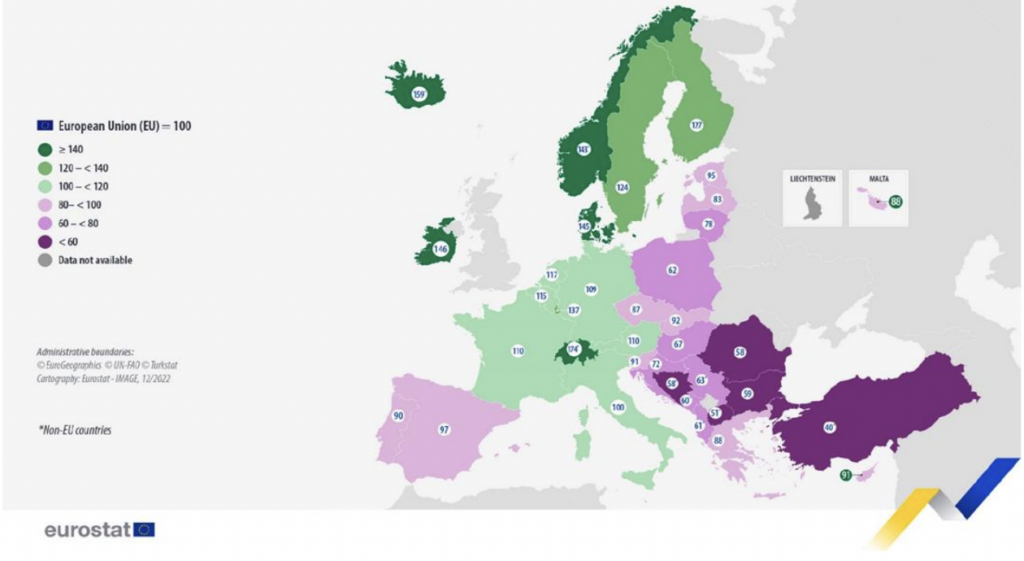
Romania polls lowest consumer prices in EU, followed by Bulgaria, Poland
Romania last year recorded the EU’s lowest level of prices for consumer goods and services in households, 42% below the EU average, according to the Romanian National Institute of Statistics (INS), www.digi24.ro reported. Romanian prices are followed by Bulgaria (41% below the EU average) and Poland (38%).
“In 2022, for consumer goods and services that are part of final consumption, EUR 100 are paid at the EU level, EUR 146 in Ireland and EUR 58 in Romania,” the INS wrote.
“Price level indices express how many units of the same currency are needed to buy an identical volume of goods and services in different countries, for each group of goods and services,” it added.
Romania is the cheapest member state for food and non-alcoholic beverages (72%), just ahead of Poland (73%). Additionally, Romania had the lowest prices in the EU for furniture, household equipment and home maintenance (70%), just ahead of Bulgaria (71%) in second place.
Bulgaria recorded the lowest price levels in the categories of alcoholic beverages and tobacco (66%), clothing and footwear (80%), and home maintenance, water, electricity, gas and other fuels (37%), followed by Poland in the first and third of those groups (73% and 40% respectively).
Hungary: cheapest for transport
Hungary remains the cheapest member state for categories of transport (72%) and recreation and culture (64%), while Bulgaria scored lowest for accommodation and restaurant services (51%).
Romania, Portugal and Hungary all scored 77% of the average GDP per EU inhabitant, calculated on the basis of PPC, i.e. the ratio between the prices charged in country. The lowest GDP per inhabitant was recorded by Bulgaria in 2022, at 41% below the EU average.

The highest level of prices for the final consumption of households was recorded in Ireland (46% above the EU average), followed by Denmark (45%), Luxembourg (37%) and Finland (27% above the EU average).
The highest level of GDP per EU inhabitant was recorded by Luxembourg, which exceeded the EU average by 161%. “This is partially explained by the fact that a large number of foreign citizens have a large share in the total labour force of the country and contribute to the realization of the GDP, but they are not part of the resident population,” the INS wrote.
Denmark has the highest price level for clothing and footwear (133%), and Ireland is the most expensive country in the EU for products in the alcoholic beverages and tobacco (216%) and maintenance, i.e, housing, water, electricity, gas and other fuels (212%).
Luxembourg has the highest price level for articles of furniture, household equipment and current home maintenance (126%) among the member states.
Denmark (127%) and Sweden (126%) are the most expensive countries in the EU for transport. The former country is also the most expensive country for recreation and culture (141%) and accommodation and restaurant services (156%).





